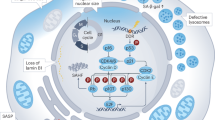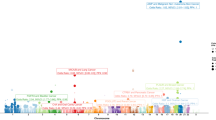Abstract
Background:
Obesity is associated with larger tumors, shorter time to PSA failure, and higher Gleason scores. However, the mechanism(s) by which obesity promotes aggressive prostate cancer remains unknown. We hypothesize that circulating factors related to obesity promote prostate cancer progression by modulating components of the metastatic cascade.
Methods:
Male C57BL/6 mice (6 weeks) were fed an ad libitum diet-induced obesity (60% fat) or control diet (10% fat) for 12 weeks. Serum was collected, metabolic and inflammatory proteins were measured by an antibody array. Sera were used to measure, in vitro, characteristics of a metastatic phenotype.
Results:
Comparable to obese men, obese sera contained higher levels or leptin, vascular endothelial growth factor, PAI-1, interleukin-6 (IL-6) and lower levels of testosterone. In prostate cells, serum was used to assess: proliferation, invasion, migration, epithelial-mesenchymal-transition (EMT) and matrix metalloproteinase (MMP) activity. LNCaP and PacMetUT1 cells exposed to obese sera increased proliferation, whereas PrEC and DU145 were unaffected. LNCaP, PacMetUT1 and DU145 cancer cells exposed to obese sera resulted in increased invasion, migration and MMP-9 activity. Prostate cancer cells exposed to obese sera showed increased vimentin, dispersion of e-cadherin and β-catenin from the plasma membrane.
Conclusion:
We report, prostate cancer cells exposed to sera from obese mice increases proliferation, invasion, migration, MMP activity and induces changes in proteins critical for EMT.
This is a preview of subscription content, access via your institution
Access options
Subscribe to this journal
Receive 4 print issues and online access
$259.00 per year
only $64.75 per issue
Buy this article
- Purchase on Springer Link
- Instant access to full article PDF
Prices may be subject to local taxes which are calculated during checkout







Similar content being viewed by others
References
SEER Research Data 2010. http://seer.cancer.gov/statfacts/html/prost.html#survival.
Gong Z, Agalliu I, Lin DW, Stanford JL, Kristal AR . Obesity is associated with increased risks of prostate cancer metastasis and death after initial cancer diagnosis in middle-aged men. Cancer 2007; 109: 1192–1202.
Efstathiou JA, Bae K, Shipley WU, Hanks GE, Pilepich MV, Sandler HM et al. Obesity and mortality in men with locally advanced prostate cancer: analysis of RTOG 85-31. Cancer 2007; 110: 2691–2699.
Freedland SJ, Bañez LL, Sun LL, Fitzsimons NJ, Moul JW . Obese men have higher-grade and larger tumors: an analysis of the duke prostate center database. Prostate Cancer Prostatic Dis 2009; 12: 259–263.
Hursting S, Nunez N, Varticovski L, Vinson C . The Obesity-Cancer link: lessons learned from a fatless mouse. Cancer Res 2007; 67: 2391–2393.
Finley DS, Calvert VS, Inokuchi J, Lau A, Narula N, Petricoin EF et al. Periprostatic adipose tissue as a modulator of prostate cancer aggressiveness. J Urol 2009; 182: 1621–1627.
Fenton JI, Nuñez NP, Yakar S, Perkins SN, Hord NG, Hursting SD . Diet-induced adiposity alters the serum profile of inflammation in C57BL/6N mice as measured by antibody array. Diabetes Obes Metab 2009; 11: 343–354.
Efstathiou JA, Chen MH, Renshaw AA, Loffredo MJ, D’Amico AV . Influence of body mass index on prostate-specific antigen failure after androgen suppression and radiation therapy for localized prostate cancer. Cancer 2007; 109: 1493–1498.
Narayanan NK, Nargi D, Horton L, Reddy BS, Bosland MC, Narayanan BA . Inflammatory processes of prostate tissue microenvironment drive rat prostate carcinogenesis: preventive effects of celecoxib. Prostate 2009; 69: 133–141.
Saikali Z, Setya H, Singh G, Persad S . Role of IGF-1/IGF-1R in regulation of invasion in DU145 prostate cancer cells. Cancer Cell Int 2008; 8: 10.
He H, Yang X, Davidson AJ, Wu D, Marshall FF, Chung LW et al. Progressive epithelial to mesenchymal transitions in ARCaP E prostate cancer cells during xenograft tumor formation and metastasis. Prostate 2010; 70: 518–528.
Yu X, Wang Y, Jiang M, Bierie B, Roy-Burman P, Shen MM et al. Activation of beta-Catenin in mouse prostate causes HGPIN and continuous prostate growth after castration. Prostate 2009; 69: 249–262.
Jiang YG, Luo Y, He DL, Li X, Zhang LL, Peng T et al. Role of Wnt/beta-catenin signaling pathway in epithelial-mesenchymal transition of human prostate cancer induced by hypoxia-inducible factor-1alpha. Int J Urol 2007; 14: 1034–1039.
Sullivan NJ, Sasser AK, Axel AE, Vesuna F, Raman V, Ramirez N et al. Interleukin-6 induces an epithelial-mesenchymal transition phenotype in human breast cancer cells. Oncogene 2009; 28: 2940–2947.
Stankovic S, Konjevic G, Gopcevic K, Jovic V, Inic M, Jurisic V . Activity of MMP-2 and MMP-9 in sera of breast cancer patients. Pathol Res Pract 2010; 206: 241–247.
Shah FD, Shukla SN, Shah PM, Shukla HK, Patel PS . Clinical significance of matrix metalloproteinase 2 and 9 in breast cancer. Indian J Cancer 2009; 46: 194–202.
Kossakowska AE, Edwards DR, Prusinkiewicz C, Zhang MC, Guo D, Urbanski SJ . Interleukin-6 Regulation of Matrix Metalloproteinase (MMP-2 and MMP-9) and Tissue Inhibitor of Metalloproteinase (TIMP-1) Expression in Malignant Non-Hodgkin's Lymphomas. Blood 1999; 94: 2080–2089.
Dong Z, Bonfil RD, Chinni S, Deng X, Trindade Filho JC, Bernardo M et al. Matrix metalloproteinase activity and osteoclasts in experimental prostate cancer bone metastasis tissue. AM J Pathol 2005; 166: 1173–1186.
Nunez NP, Perkins SN, Smith NC, Berrigan D, Berendes DM, Varticovski L et al. Obesity accelerates mouse mammary tumor growth in the absence of ovarian hormones. Nutr Cancer 2008; 60: 534–541.
Troyer DA, Tang Y, Bedolla R, Adhvaryu SG, Thompson IM, Abboud-Werner S et al. Characterization of PacMetUT1, a recently isolated human prostate cancer cell line. Prostate 2008; 68: 883–892.
Sobel RE, Yuzhuowang A . Molecular analysis and characterization of PrEC, commercially available prostate epithelial cells. In VitroCell Dev Biol (2006); 42: 33–39.
Rohrmann S, Shiels M, Lopez DS, Rifai N, Nelson WG, Kanarek N et al. Body fatness and sex steroid hormone concentrations in US men: results from NHANES III. Cancer Causes Control (2011); 22: 1141–1151.
Pasquali R, Casimirri F, Cantobelli S, Melchionda N, Morselli Labate AM, Fabbri R et al. Effect of obesity and body fat distribution on sex hormones and insulin in men. Metabolism (1991); 4: 101–104.
Rodriguez C, Freedland SJ, Deka A, Jacobs EJ, McCullough ML, Patel AV et al. Body mass index, weight change, and risk of prostate cancer in the Cancer Prevention Study II Nutrition Cohort. Cancer Epidemiol Biomarkers Prev 2007; 16: 63–69.
Kane CJ, Im R, Amling CL, Presti Jr JC, Aronson WJ, Terris MK et al. Outcomes after radical prostatectomy among men who are candidates for active surveillance: Results from the SEARCH Database. Urology 2010; 76: 695–700.
López Fontana CM, Recalde Rincón GM, Messina Lombino D, Uvilla Recupero AL, Pérez Elizalde RF, López Laur JD . Body mass index and diet affect prostate cancer development. Actas Urol Esp 2009; 33: 741–746.
Jayachandran J, Bañez LL, Aronson WJ, Terris MK, Presti Jr JC, Amling CL et al. Obesity as a predictor of adverse outcome across black and white race: results from the Shared Equal Access Regional Cancer Hospital (SEARCH) Database. Cancer 2009; 115: 5263–5271.
Tam L, McGlynn LM, Traynor P, Mukherjee R, Bartlett JM, Edwards J . Expression levels of the JAK/STAT pathway in the transition from hormone-sensitive to hormone-refractory prostate cancer. Br J Cancer 2007; 97: 378–383.
DeMiguel F, Lee SO, Lou W, Xiao X, Pflug BR, Nelson JB et al. Stat3 enhances the growth of LNCaP human prostate cancer cells in intact and castrated male nude mice. Prostate 2002; 52: 123–129.
Jin RJ, Lho Y, Connelly L, Wang Y, Yu X, Saint Jean L et al. The nuclear factor-kappaB pathway controls the progression of prostate cancer to androgen-independent growth. Cancer Res 2008; 68: 6762–6769.
Berg AH, Scherer PE . Adipose tissue, inflammation, and cardiovascular disease. Circ Res 2005; 96: 939–949.
Lamarre NS, Ruggieri Sr MR, Braverman AS, Gerstein MI, Mydlo JH . Effect of obese and lean Zucker rat sera on human and rat prostate cancer cells: implications in obesity-related prostate tumor biology. Urology 2007; 69: 191–195.
Acknowledgements
Funding for this study was provided by the NCI to L deGraffenried (R01CA118962).
Author information
Authors and Affiliations
Corresponding author
Ethics declarations
Competing interests
The authors declare no conflict of interest.
Rights and permissions
About this article
Cite this article
Price, R., Cavazos, D., De Angel, R. et al. Obesity-related systemic factors promote an invasive phenotype in prostate cancer cells. Prostate Cancer Prostatic Dis 15, 135–143 (2012). https://doi.org/10.1038/pcan.2011.54
Received:
Revised:
Accepted:
Published:
Issue Date:
DOI: https://doi.org/10.1038/pcan.2011.54
Keywords
This article is cited by
-
Body mass index is associated with higher Gleason score and biochemical recurrence risk following radical prostatectomy in Chinese men: a retrospective cohort study and meta-analysis
World Journal of Surgical Oncology (2015)
-
Serum 17β-estradiol fails as a marker in identification of aggressive tumour disease in patients with localized prostate cancer
World Journal of Urology (2015)
-
Obesity has multifaceted impact on biochemical recurrence of prostate cancer: a dose–response meta-analysis of 36,927 patients
Medical Oncology (2014)
-
Epithelial cancers in the post-genomic era: should we reconsider our lifestyle?
Cancer and Metastasis Reviews (2013)
-
The Obesity-Inflammation-Eicosanoid Axis in Breast Cancer
Journal of Mammary Gland Biology and Neoplasia (2013)



